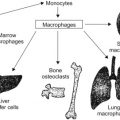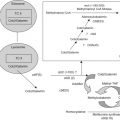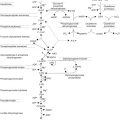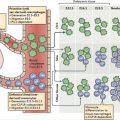Abstract
Since the 1970s, outcomes for childhood cancer have shown remarkable and steady improvements. Five-year overall survival from childhood cancer now exceeds 80% and as many as 1 in 500 young American adults are survivors of childhood cancer. Despite these successes, nearly a quarter of survivors will have multiple severe, disabling or life-threatening conditions by age 50, over 90% have measurable end-organ damage and almost 20% will die within 30 years of diagnosis. The complications faced by survivors, and the care they require, are multisystem and complex. The most common complications include endocrine, cardiac, musculoskeletal and pulmonary complications, as well as treatment-related secondary neoplasms. Survivors also often face societal, emotional and psychological barriers, such as learning challenges, school difficulties, and problems obtaining insurance, and almost one in five suffer from stress-related mental disorders such as post-traumatic stress symptoms. Extensive, intricate, long-term medical and psychological follow-up is required to maintain survivors’ health and quality of life.
Keywords
late-effects, survivorship, chronic illness, neurocognitive deficits, infertility, cardiomyopathy, second malignant neoplasms
Since the 1970s, outcomes for childhood cancer have shown remarkable and steady improvements. Five-year overall survival from childhood cancer now exceeds 80% and as many as 1 in 500 young American adults are survivors of childhood cancer. Despite these successes, nearly a quarter of survivors will have multiple severe, disabling or life-threatening conditions by age 50, over 90% have measurable end-organ damage and almost 20% will die within 30 years of diagnosis. The complications faced by survivors, and the care they require, are multisystem and complex. The most common complications include endocrine, cardiac, musculoskeletal and pulmonary complications, as well as treatment-related secondary neoplasms. Survivors also often face societal, emotional and psychological barriers, such as learning challenges, school difficulties, and problems obtaining insurance, and almost one in five suffer from stress-related mental disorders such as post-traumatic stress symptoms. Extensive, intricate, long-term medical and psychological follow-up is required to maintain survivors’ health and quality of life.
Chemotherapy, radiation therapy, and surgery may all cause “late effects” involving any organ system. A definition of “late effects” includes any physical or psychological outcome that develops or persists beyond 5 years from the diagnosis of cancer, although there are many possible definitions. The field of “survivorship” has developed as a medical subspecialty that provides tailored and focused long-term follow-up for cancer survivors while conducting research to better understand, address and prevent the long-term complications of cancer therapy. Some late effects of therapy identified during childhood and adolescence resolve without consequence, while other late effects become chronic and may progress to become adult medical problems. The ability to predict and ameliorate late effects based on exposures has resulted in the development of screening guidelines. The following organizations have produced guidelines:
- •
Scottish Intercollegiate Guideline Network ( http://www.sign.ac.uk/pdf/sign76.pdf )
- •
Late Effects Group of the United Kingdom Children’s Cancer Study Group ( http://www.ukccsg.org/public/followup/PracticeStatement/index.html )
- •
Children’s Oncology Group ( http://www.survivorshipguidelines.org )
These guidelines are a hybrid of evidence-based risk assessment with expert opinion screening recommendations that can be individually tailored based on exposures. It is critical to be familiar with the patient’s exposures and to be able to elicit relevant information from the survivor. Important information to be obtained in follow-up of childhood cancer survivors is listed in Table 34.1 . Table 34.2 lists selected late effects associated with common chemotherapeutic exposures and suggested screening. Table 34.3 lists selected late effects associated with organ exposure to radiation and suggested screening.
|
| Exposure | Late effect | Suggested screening |
|---|---|---|
| Any chemotherapy exposure |
|
|
| Anthracyclines |
|
|
| Alkylators |
|
|
| Bleomycin |
|
|
| Corticosteroids |
|
|
| Epipodophyllotoxins |
|
|
| Heavy metals (cisplatin/carboplatin) | Ototoxicity |
|
| Methotrexate/cytarabine (high dose and intrathecal) | Neurocognitive deficits |
|
| Plant alkaloids | Peripheral neuropathy |
|
| Radiation exposure | Late effect | Suggested screening |
|---|---|---|
| Any site |
|
|
| Abdomen |
|
|
| Brain |
|
|
| Breast tissue |
|
|
| Heart |
|
|
| Lungs |
|
|
| Ovaries |
|
|
| Pituitary (>1800 cGy) |
|
|
| Testicles |
|
|
Musculoskeletal System
Surgery
Surgery remains the primary therapy for many musculoskeletal tumors and the most visible late effect is amputation. As internal prostheses have become more refined, the ability to perform limb-salvage procedures has dramatically improved. Limb-sparing procedures are now preformed in over 90% of osteosarcoma cases, without a deleterious effect on outcome. Although there are many advantages to a limb-salvage approach to extremity tumors, there are significant disadvantages as well. In particular, the prostheses generally cannot tolerate extreme stress, so sport participation is limited. Further, prosthesis infection, deterioration, and failure occur in as many as 20% of patients, which may require multiple additional surgeries.
Corticosteroids such as dexamethasone and prednisone used in cancer therapy (especially for acute lymphoblastic leukemia (ALL)) have resulted in avascular necrosis (AVN), with adolescents at highest risk. Nearly 3% of children treated for ALL will develop vascular necrosis, with much higher rates seen in those undergoing transplant. Protocols have attempted to decrease this incidence by decreasing the number of continuous weeks of exposure to dexamethasone and by utilizing more prednisone than dexamethasone. The incidence of reduced bone mineral density in survivors of childhood cancer is markedly elevated. Routine recommendations include adequate daily intake of calcium (1000–1500 mg) and vitamin D (400 IU daily) and weight-bearing exercise. The use of bisphosphonates and other absorption-reducing therapies in childhood cancer survivors remains investigational.
Radiation
For many musculoskeletal tumors, especially those not surgically resectable, radiation remains a keystone of therapy. Despite its effectiveness, radiation therapy carries with it the risk of significant consequences, which vary by site. Spine and extremity radiation can cause scoliosis, atrophy, or hypoplasia of muscles, AVN, reduced bone mineral density, discrepancy in extremity length, and alteration in sitting-to-standing height ratio. Brain and head radiation may affect tooth enamel and formation, as well as cause learning challenges, memory loss, and personality changes. Secondary neoplasms are a risk of radiation to any site.
Women treated with chest radiation are at greatly increased risk of breast cancer, at rates similar to those of women carrying BRCA mutations. By the age of 50, survivors treated with chest radiation have a 30% incidence of breast cancer, with the highest risk being in those exposed to >20 Gy. Breast cancer screening in survivors is now recommended for women who received 10–19 Gy and required for those who received >20 Gy.
These late consequences are related to dose, site, volume, and age of the child at the time of radiation. The higher the dose and the younger the child, the more pronounced the late effects. Some protocols have been designed to reduce potential radiation-associated late effects through the use of:
- •
Low-volume, low-dose radiation combined with effective systemic therapy.
- •
Improvements in the delivery of radiation, including proton radiation.
- •
Dental prophylaxis prior to radiotherapy in maxillofacial sites.
Screening and Management
Regular physical examinations with appropriate imaging (e.g., magnetic resonance imaging (MRI) for suspected AVN) can identify musculoskeletal problems early and potentially reduce their impact on a survivor’s quality of life. Survivors who have been exposed to high doses of steroids, especially in conjunction with radiation or high-dose methotrexate (MTX), may benefit from an evaluation of bone mineral density at entry into long-term follow-up. Survivors should be counseled to engage in routine weight-bearing exercise and to consume the recommended daily allowance of vitamin D (400 IU daily) and calcium (1000–1500 mg daily).
Cardiovascular System
Chemotherapy, radiotherapy, and especially their combined use, have the potential to cause both early and late cardiac complications. After cancer recurrence and secondary neoplasms, the leading cause of morbidity and mortality in long-term survivors of childhood cancer is cardiac-related disease. The primary cardiac late effect is the development of cardiomyopathy and congestive heart failure. Other late cardiac complications include valvular heart disease and the onset of adult coronary artery disease at a younger age. Despite a focus on identification of risk factors and monitoring, cardiac toxicity remains an idiosyncratic event. Recent publications have begun to examine the role of genetic polymorphisms (e.g., those involved in anthracycline metabolism) in the development of late cardiovascular disease.
Chemotherapy
Anthracyclines
Anthracycline-induced myocyte death results in hypertrophy of existing myocytes, reduced thickness of the wall of the heart, ischemia, and interstitial fibrosis. The heart is unable to compensate adequately to meet the demands of growth, pregnancy, or other cardiac stress, which results in late-onset anthracycline-induced cardiac failure. The incidence of cardiomyopathy is related to the cumulative dose of anthracyclines, occurring in ~10% of survivors after a cumulative dose of less than 400 mg/m 2 , ~20% after 400–599 mg/m 2 , ~50% after 600–799 mg/m 2 , and almost 100% after 800 mg/m 2 . While toxicity with higher doses of anthracyclines is well documented and studied, recent data suggest that even patients exposed to <100 mg/m 2 may have long-term cardiac dysfunction.
Anthracycline-induced cardiomyopathy is a progressive disorder. It ultimately manifests with signs of congestive heart failure, including exercise intolerance, dyspnea, peripheral edema, pulmonary rales, S3 and S4 heart sounds and hepatomegaly. Rapid progression of symptoms may occur with pregnancy, anesthesia, isometric exercise, the use of illicit drugs (e.g., cocaine), prescription drugs, or alcohol. Early cardiomyopathy may be influenced by pharmacotherapy, such as with angiotensin-converting enzyme (ACE) inhibitors. Once it progresses to florid cardiac dysfunction, the only definitive treatment remains cardiac transplant, which exposes survivors to a new set of health risks and long-term consequences.
Anthracycline exposure is also associated with prolonged QTc intervals, sinus node dysfunction, and premature ventricular contractions. While arrhythmias and conduction abnormalities may be self-limited, some survivors may require pacemakers for persistent heart blocks.
Cyclophosphamide
Cyclophosphamide-induced cardiac effects occur primarily with high-dose preparatory regimens for stem cell transplantation. Cyclophosphamide causes intramyocardial edema and hemorrhage, often in association with serosanguineous pericardial effusion and fibrous pericarditis. This cardiotoxicity is usually reversible.
Radiation
Radiation is toxic to cardiomyocytes through multiple mechanisms, including ischemia, chronic inflammation, and fibrosis. In addition to acting in concert with anthracyclines to increase the risk of cardiomyopathy, radiation to the heart (e.g., mantle radiation for Hodgkin lymphoma or total body irradiation as conditioning for bone marrow transplantation) can also induce valvular damage, pericarditis, or coronary vessel damage, increasing the risk of ischemic heart disease. Cardiac doses over 20 Gy confer the highest risk. Radiation to the neck can damage the carotid vessels, increasing the risk of stroke.
Screening and Management
In addition to a good interval history and physical examination, important screening tools for evaluating cardiac function following exposure to anthracyclines or radiation include:
- •
Electrocardiogram (EKG).
- •
Echocardiogram (ECHO).
- •
Radionuclide angiocardiography.
EKG findings include prolonged QT c (0.45 or longer), second-degree atrio-ventricular (A–V) block, complete heart block, ventricular ectopy, ST elevation or depression, and T-wave changes. An association between prolongation of QT c interval and anthracycline dose over 300 mg/m 2 has been described in childhood cancer survivors.
ECHO findings include shortening fraction (SF) and velocity of circumferential fiber shortening for the measurement of left ventricular contractility.
Radionuclide cardiac cineangiocardiography (multigated acquisition (MUGA)) determines the ejection fraction and is useful for those patients in whom a good ECHO cannot be obtained. A left ventricular ejection fraction (LVEF) of 55% or more indicates normal systolic function.
The following criteria define progressively deteriorating cardiac function:
- •
A decrease in the SF by an absolute value of 10% from the previous test.
- •
SF less than 29%.
- •
A decrease in the MUGA LVEF by an absolute value of 10% from the previous test.
- •
MUGA LVEF less than 55%.
- •
A decrease in the MUGA LVEF with stress.
Management of anthracycline and radiation-induced cardiomyopathy should include:
- •
Digoxin to improve ventricular contractility.
- •
Diuretics to decrease sodium and water retention.
- •
ACE-inhibiting agents (e.g., enalapril) to decrease sodium and water retention and decrease afterload.
Prognosis of progressive late-onset heart failure is poor. Cardiac transplantation should be considered. The actuarial survival rate at 5 years after cardiac transplant is 77%.
The Children’s Oncology Group provides guidelines for long-term follow-up of cardiac function following anthracycline and radiation exposure, the frequency of which is determined by the cumulative anthracycline doses and exposure to radiation ( Table 34.4 ).








